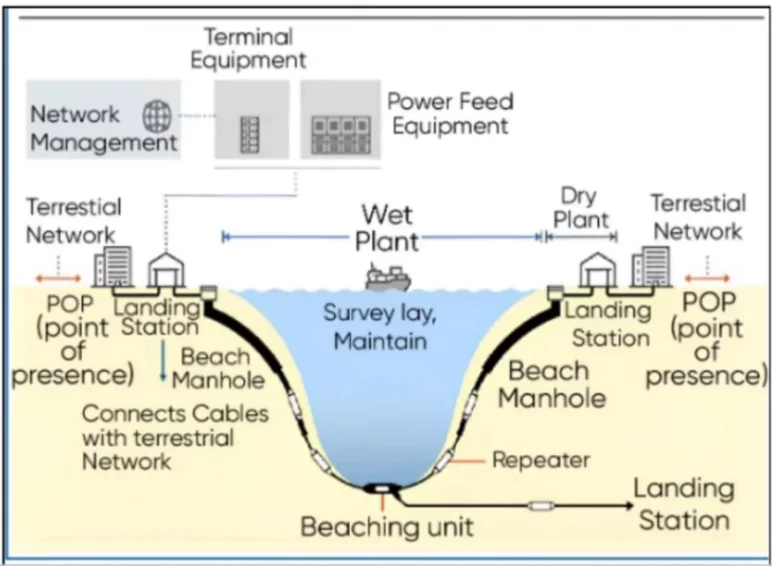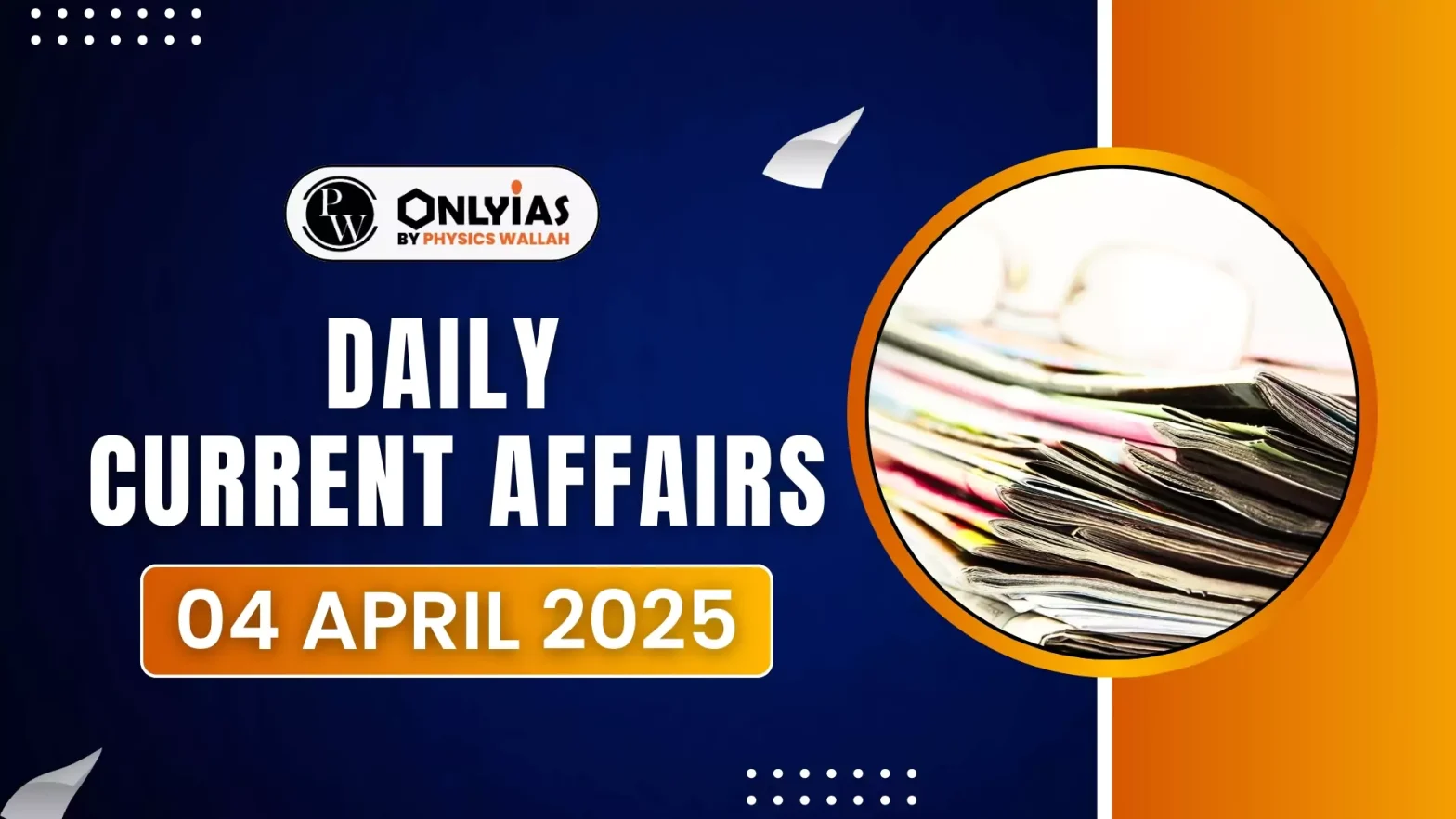India is witnessing the launch of new undersea cable landing systems, including Airtel’s 2Africa Pearls and SEA-ME-WE-6, boosting international internet bandwidth.
- Despite progress, India’s undersea cable infrastructure still lags behind smaller nations like Singapore, making it vulnerable to disruptions.
What are Undersea Cables?

- Undersea cables are fiber optic cables laid on the ocean floor that connect internet networks between countries.
- Purpose: These cables carry the majority of global internet data, enabling communication and financial transactions across borders.
- Structure and Landing: These cables are heavily insulated and contain fiber optic strands for transmitting data.
- These cables surface at landing points, which connect to landing stations inland and then to broader terrestrial networks.
- Global network: Approximately 600 undersea cables exist globally.
- Economic Significance: They handle 90% of data, 80% of global trade, and $10 trillion in financial transactions.
India’s Current Undersea Cable Ecosystem
- Cable Landing Sites: India’s two main hubs for subsea cables are Mumbai and Chennai.
- Around 17 international cables land in India, with 95% of subsea cables concentrated in a 6-km stretch in Versova, Mumbai.
- Domestic Connectivity: India has two domestic cable systems:
- Chennai–Andaman–Nicobar Islands (CANI)
- Kochi–Lakshadweep Islands
- Capacity Concerns: While current bandwidth is considered sufficient, rising data traffic may soon outpace available capacity.
- Experts warn that India’s capacity may become inadequate in the near future.
- Global Comparison: India contributes only 1% of global cable landing stations and 3% of subsea cable systems, highlighting an underrepresentation in the global network.
Challenges in Undersea Cable Deployment in India
- Vulnerability to Disruptions: India is at high risk from subsea cable cuts, especially at chokepoints like the Bab-el-Mandeb Strait in the Red Sea.
- Past disruptions caused by regional conflicts, such as Houthi attacks in 2024, affected multiple cables passing through this narrow sea route.
- Overreliance on Few Routes: Many subsea cables follow traditional shipping/trade routes, limiting redundancy and increasing the risk of large-scale outages.
- A disruption in these routes can cause 25% of India’s internet to go down, according to industry estimates.
- Regulatory and Logistical Bottlenecks: Laying a subsea cable in India requires around 51 permissions from various departments, including, Department of Telecom, Ministry of Home Affairs, Ministry of Environment, Department of Fisheries, Local authorities and municipalities, etc
- Time-Consuming Processes: Companies like Meta highlight that 80% of project time is spent dealing with regulations in territorial waters at both ends of the cable.
- Infrastructure and Maintenance Issues: Lack of Domestic Repair Capabilities in India, it currently relies on foreign ships to repair damaged subsea cables, which requires multiple permissions and delays.
- There is an absence of domestic repair ships and cable storage depots, making the system vulnerable to prolonged outages.
- Cable Damage from Trawlers: Fishing activities, particularly trawlers, frequently damage undersea cables, further complicating maintenance efforts.
Recommendations to Improve India’s Subsea Cable Infrastructure
- Streamline Regulatory Approvals: Reduce the number of required permissions for cable deployment to expedite implementation.
- Develop Domestic Cable Repair Infrastructure: Invest in indigenous repair vessels and cable storage depots to ensure quick response to damage.
- Diversify Cable Route: Explore alternative and secure subsea routes that do not solely follow traditional trade corridors.
- Increase Landing Stations and Cable Systems: Expand the number of landing sites beyond Mumbai and Chennai to distribute risk and enhance resilience.
- Build Redundant Capacity: Plan and invest in excess capacity and backup routes to handle sudden surges or outages.
![]() 4 Apr 2025
4 Apr 2025

